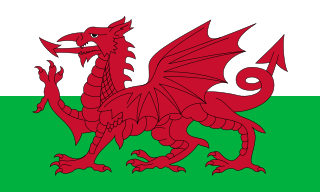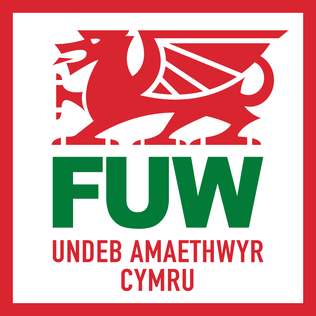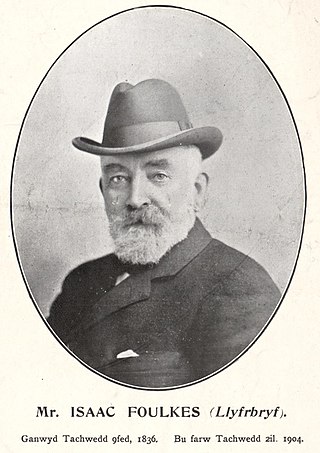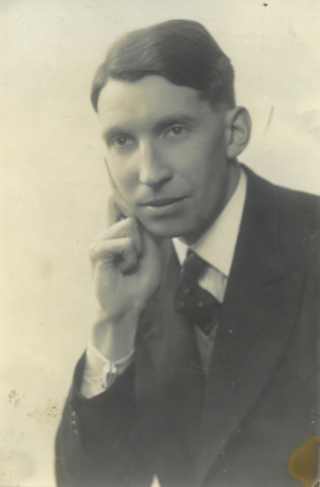
Sir John Edward Lloyd was born in Liverpool. He was educated in the University College of Wales, Aberystwyth, which he left in 1881, and Lincoln College, Oxford, from which he graduated in 1883 with a first class honours degree. Lloyd became a much-published and famous Welsh historian. He wrote the first serious history of the country's formative years, A History of Wales from the Earliest Times to the Edwardian Conquest (1911) and Owen Glendower/Owain Glyn Dŵr (1931). And he was the first editor of 'Y Bywgraffiadur Cymreig', which was published posthumously in 1953. He was knighted in 1934.

The media in Wales provide services in both English and Welsh, and play a role in modern Welsh culture. BBC Cymru Wales began broadcasting in 1923 have helped to promote a form of standardised spoken Welsh, and one historian has argued that the concept of Wales as a single national entity owes much to modern broadcasting. The national broadcasters are based in the capital, Cardiff.
Richard Hughes Williams, or Dic Tryfan, was a Welsh language writer of short stories, born in Rhosgadfan in the old county of Caernarfonshire (Gwynedd), north Wales. Most of his stories are set in the slate-quarrying communities of his native Caernarfonshire. He was known to the renowned Welsh novelist Kate Roberts, an early admirer of his work who grew up in the same area.

Rhydypennau is a hamlet in the Genau'r-glyn district of Ceredigion, Wales, approximately 4+1⁄2 miles (7.2 km) north-east of Aberystwyth. Along with the village of Pen-y-garn, Rhydypennau is now often considered to be part of the neighbouring village of Bow Street. All three places stretch in a long narrow strip along the main Aberystwyth to Machynlleth road (A487).

Paul Griffiths is a Welsh writer, theatre critic and director. He won the Drama Medal at the National Urdd Gobaith Cymru Eisteddfod three times in succession between 1995 and 1997 – the only person ever to do this. Between March 2006 and December 2013 he contributed a controversial weekly theatre column to the National Paper of Wales Y Cymro. He is also a regular contributor on the Welsh language Television Channel S4C and BBC Radio Cymru.

Ieuan Gwyllt was the bardic name of Welsh musician and minister John Roberts. His bardic name is derived from the pen name he used whilst writing poetry as a boy, Ieuan Gwyllt Gelltydd Melindwr. He was born at Tanrhiwfelen, a house just outside Aberystwyth, and died in Caernarfon on 14 May 1877. He was buried at Caeathro cemetery near Caernarfon.

Aberystwyth is a university and seaside town and a community in Ceredigion, Wales. It is the largest town in Ceredigion and 16 miles (26 km) from Aberaeron, the county's other administrative centre. In 2021, the population of the town was 14,640.

The Farmers’ Union of Wales (FUW), known as the Undeb Amaethwyr Cymru (UAC) in Welsh, is a member organisation that was formed in 1955 to represent farmers in Wales.
Beth Robert is a Welsh television actress from Pont-rhyd-y-groes, Wales, who has worked in television since 1986. Her appearances in TV series, in Welsh and English, include Hinterland, The Indian Doctor and Pobol y Cwm.
Elena Puw Morgan was a Welsh writer. She became the first woman to win the Literary Medal at the National Eisteddfod, with the novel Y Graith in 1938. In addition to novels for an adult audience, Morgan published Welsh-language children's books.

Isaac Foulkes was a Welsh author and editor.

John Tudor Jones, also known as John Eilian was a Welsh journalist, poet, literary scholar, broadcaster, and translator into Welsh of many classical songs and children's books.
Alice Matilda Langland Williams, more commonly known as Alys Mallt and Y Fonesig Mallt, was a Welsh political writer and celtophile. She was born in Brecknockshire to an English-speaking family, but learned the Welsh language when influenced by the circle of Welsh heiress Augusta Hall, Baroness Llanover.
The Welsh Theatre Company was a professional theatrical company that performed in English in Wales. The Welsh language section of the company was Cwmni Theatr Cymru and the two shared workshops and technical facilities until 1973.

Eurwyn Wiliam is a Welsh curator and author who was Chairman of the Royal Commission on the Ancient and Historical Monuments of Wales (2009–19) and Assistant Keeper of the National Museum Wales.
Kathryn Jenkins was a scholar of Welsh language and culture, especially local hymnology. She was also a hymn writer in Welsh.
Rhiannon Ifans, FLSW is a Welsh academic specialising in English, Medieval and Welsh literature. She was an Anthony Dyson Fellow at the Centre for Advanced Welsh and Celtic Studies, in University of Wales Trinity St. David. She twice won a Tir na-n-Og prize for her work and won the literary medal competition at the Welsh Eisteddfod, for her 2019 debut novel, Ingrid, which was chosen for the Welsh Literature Exchange Bookshelf. In 2020, Ifans was elected as a Fellow of the Learned Society of Wales.

The 2022 Ceredigion County Council election took place as of 5 May 2022 to elect 38 members to Ceredigion Council. On the same day, elections were held to the other 21 local authorities and to community councils in Wales as part of the 2022 Welsh local elections. The previous all-council election took place in May 2017 and future elections will take place every five years.
"The Wave" is a Welsh-language cywydd by the mid 14th-century poet Gruffudd Gryg. It is a llatai poem, which is to say one in which an animal or inanimate object is sent bearing a message of love. In this case an ocean wave is sent by the poet's beloved in Anglesey, and reaches him as he returns by ship from a pilgrimage to Santiago de Compostella. It is thought to have been written in or about the 1370s. "The Wave" is a widely acclaimed poem, and has been compared favourably with the finest poems of Dafydd ap Gwilym, who is often considered the greatest of the Welsh poets.











